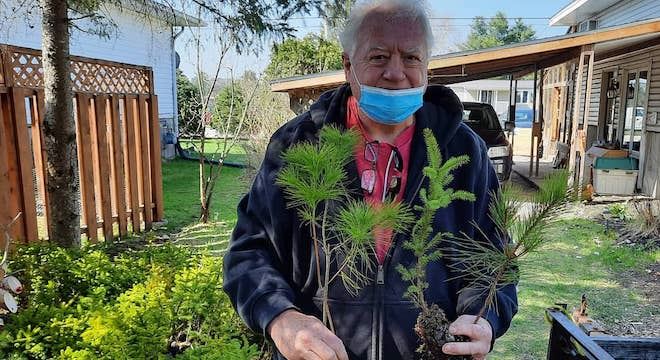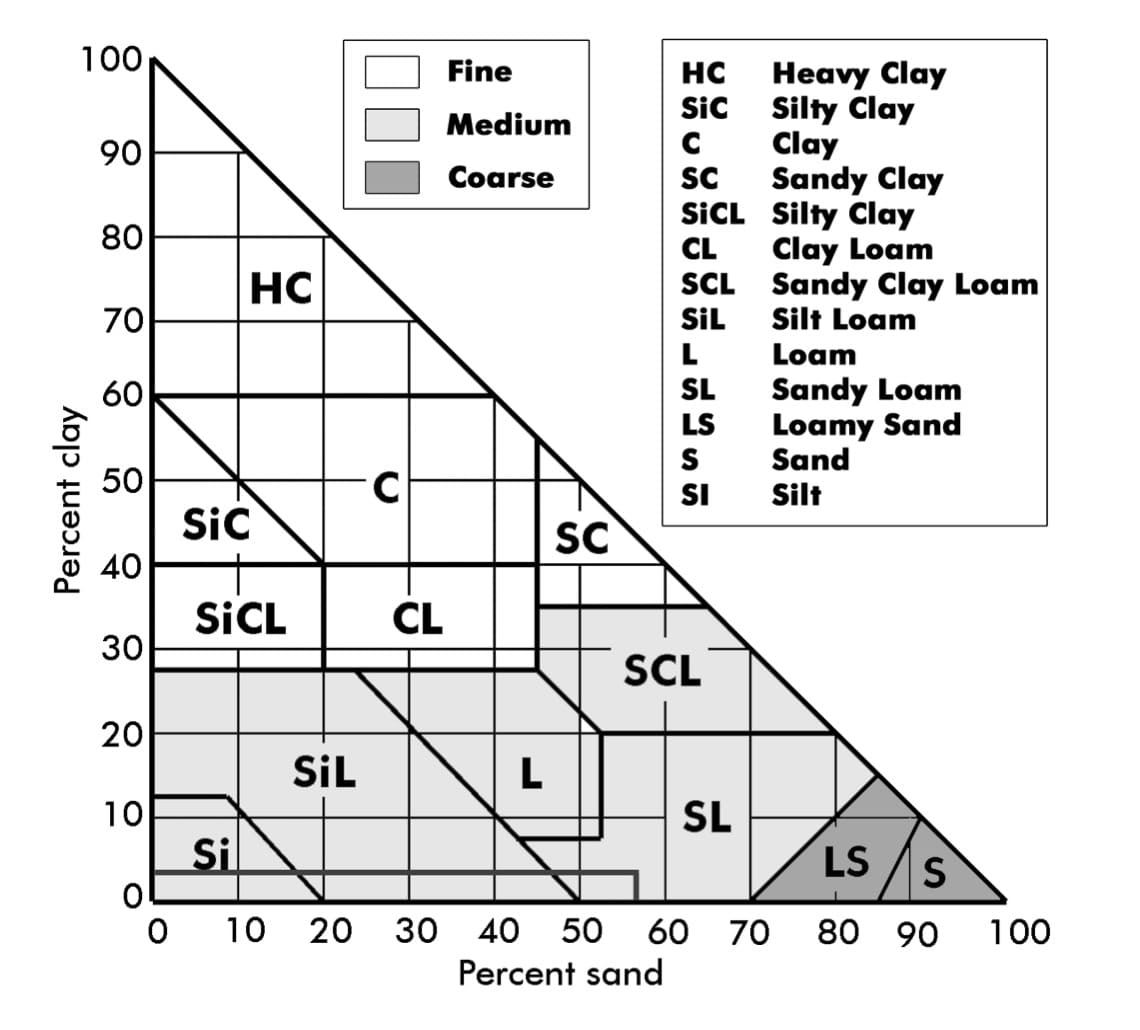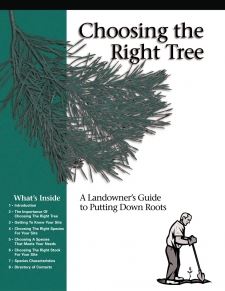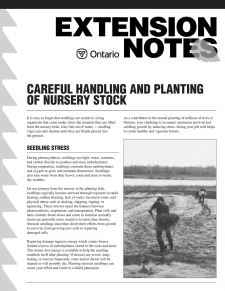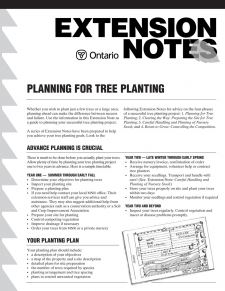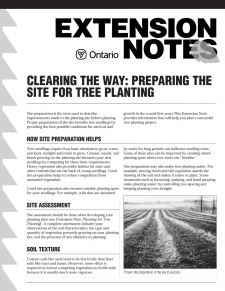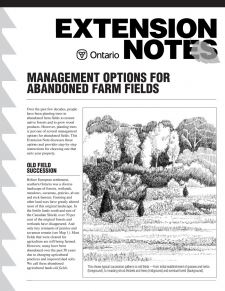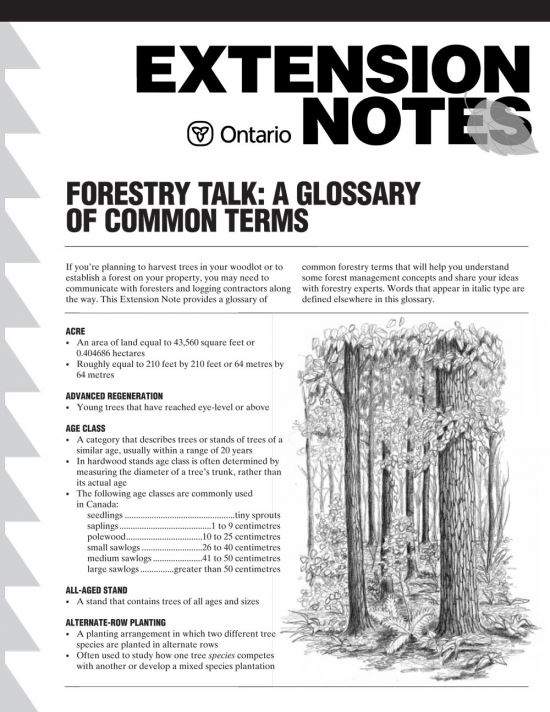- About
- Member Resources
- Woodland 101
- SEEDS & TREES - KNOW YOUR PLANTING SITE
Seeds & Trees |
Knowing Your Planting SiteLandowners have access to a wide variety of tree and shrub species from nurseries across the province. However, decisions about which species to plant should not be based solely on planting objectives. Landowners should also give consideration to the characteristics of the planting site. Different species are genetically adapted to thrive in or at least tolerate certain site conditions. If you respect this genetic adaptation, your plantings will be more successful. There are three main planting site characteristics that will influence how one tree species thrives over another. These three characteristics are – soil type, moisture conditions and availability of light. Soil Types Trees require soil to provide them with the necessary moisture and nutrients to survive and grow. The structure of a soil affects water movement, aeration and rooting patterns. Each tree species has adapted to a specific range of soil conditions, and understanding soil characteristics will help you plan your planting project. All soils consist of four main ingredients - mineral particles, air, water and organic matter. However, it is the quantity of each element in the soil that is used to determine its type. For example, sandy soils are more abrasive to the feel because they have larger mineral particles. Clay soils are much smoother in texture due to the presence of very small particles. Although there are numerous combinations of different soil classes (see soil triangle), for the purpose of most planting projects, soils can be classified into three very simple types (or texture classes) - sand, loam and clay. Here are a few of the basic characteristics of these three soil types:
Sand soilsSand soils have easily detectable particles and are gritty in texture; water retention is very poor, and they are more resistant to compaction and have minimal nutrient value. Loam soilsLoam soils have relatively equal proportions of sand, silt and clay; feel smooth but there is evidence of graininess; have some nutrient value, and have fair to good moisture retention. Clay soilsClay Soils have very fine particles, smooth texture, retard the movement of water, contain high nutrient value and compact easily when wet. Moisture or Drainage ConditionsSoil type also influences drainage. It is very important to select species that are adapted to the site's moisture conditions. Generally, imperfectly drained soils will remain wet for some time, while a well-drained site will dry out rapidly at any time of the year. Observe your planting site in the spring, fall and after a substantial rainfall to get a good indication of site drainage. Light Requirements (or Shade Tolerance)Different species require different amounts of light to survive and grow in the early establishment phase. Some species that regenerate naturally in the shade of existing trees have become adapted to low levels of light and will struggle to become established in an open, exposed situation. Other species require full light and will not survive long in the shade. The term used when describing the amount of light required by a species is called shade tolerance. The shade tolerance of a species simply refers to the species' ability to survive and grow in the shade of another tree. This element is a factor whenever you are planting in an open field or a cut over site where the availability of light is unlimited or within a forest area that may only provide partial light conditions. Here is a partial list of species found in Ontario and their relative shade tolerance: Tolerant speciessugar maple Mid-tolerant speciesbasswood Intolerant speciesred pine Matching the Species to the SiteOnce you have assessed your site, the next step is matching the right species to the characteristics of the planting site. Table #1 provides recommendations regarding soil type and drainage, and you can use the information to help match the tree species to your site conditions. You can use this as a rule of thumb. However, if you do have some doubts about what species to plant, you should consult with a nursery or with a forest consultant. Table 1 : Species recommended for different site conditions
Information in this table is from a Landowner's Guide to Putting Down Roots Need more information?Additional information on other aspects of tree planting is available in a series of extension notes from the LandOwner Resource Centre. This information is available online, or copies of the following extension notes can be obtained by calling the LRC at (613) 692-2390. | ||||||||||||||||

